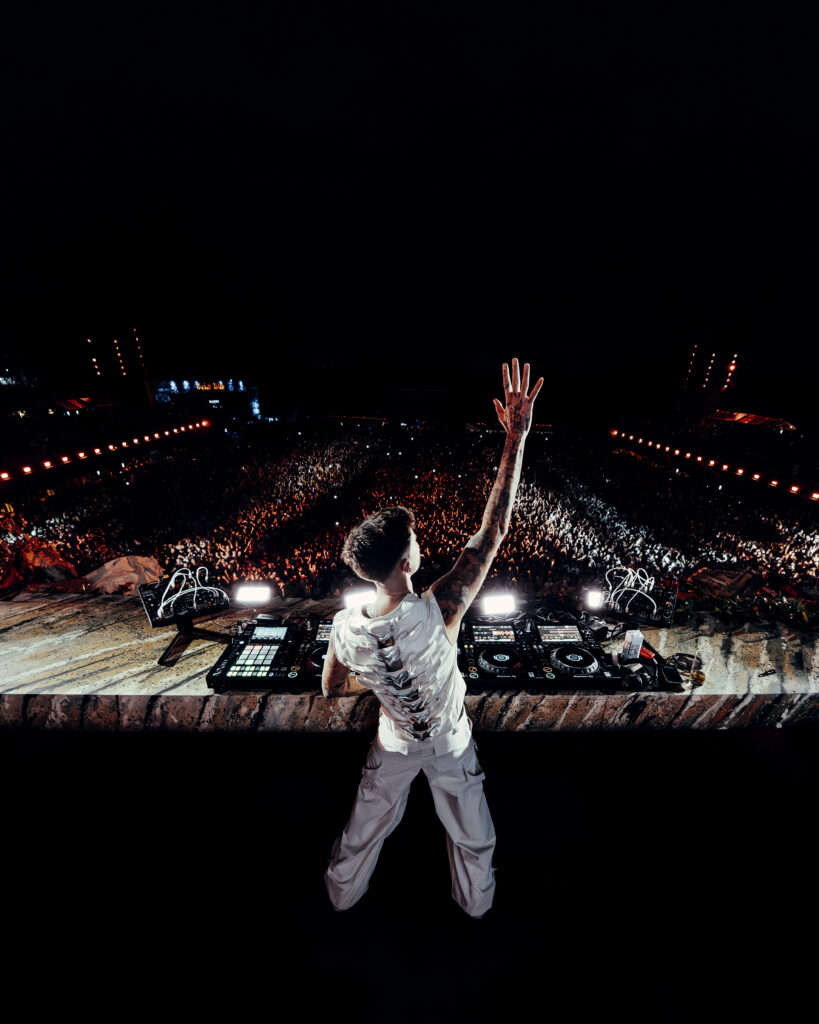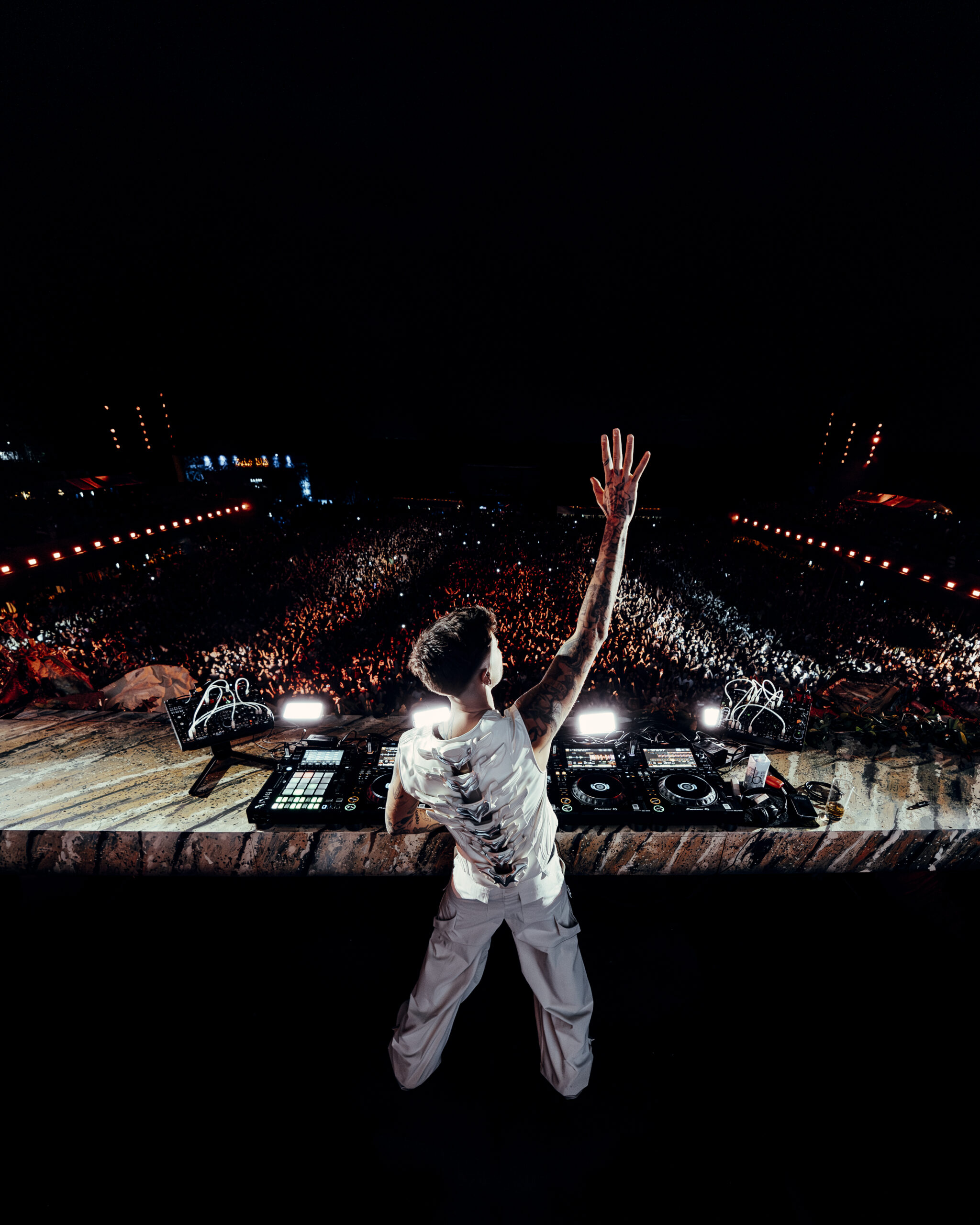The multidisciplinary artist, best known for weaving electronic music, cinematic visuals, and philosophical narratives into immersive experiences, has just completed a groundbreaking run at the Sphere in Las Vegas. His show wasn’t just a concert; it was a theatrical performance, an opera, a digital pilgrimage through speculative futures. We caught up with him about the world he’s built and the making of his new album, The End Of Genesys.
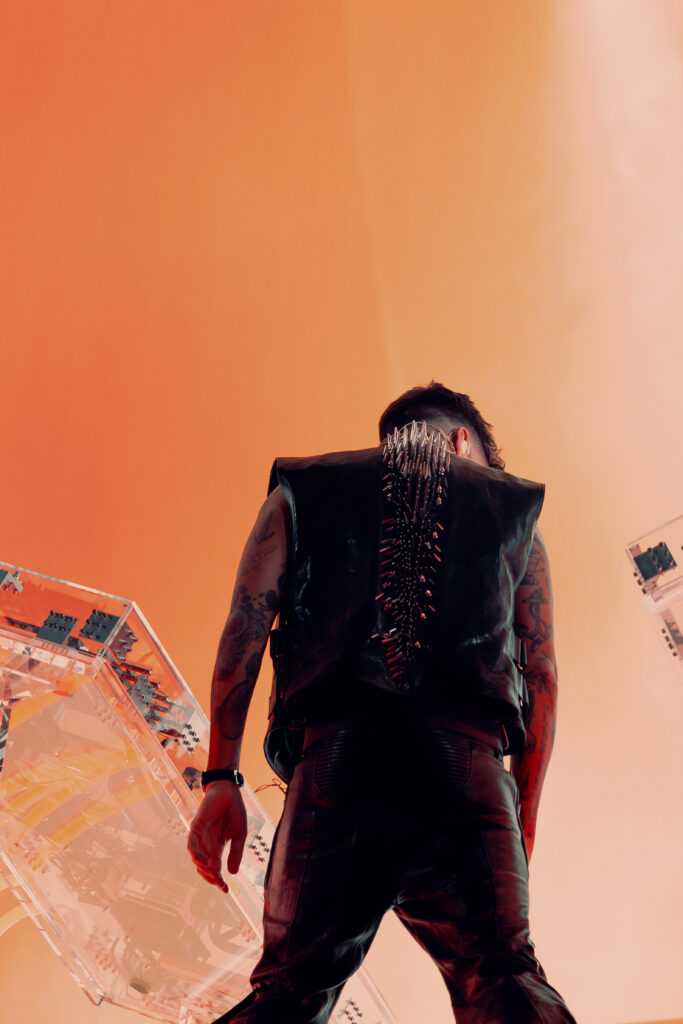
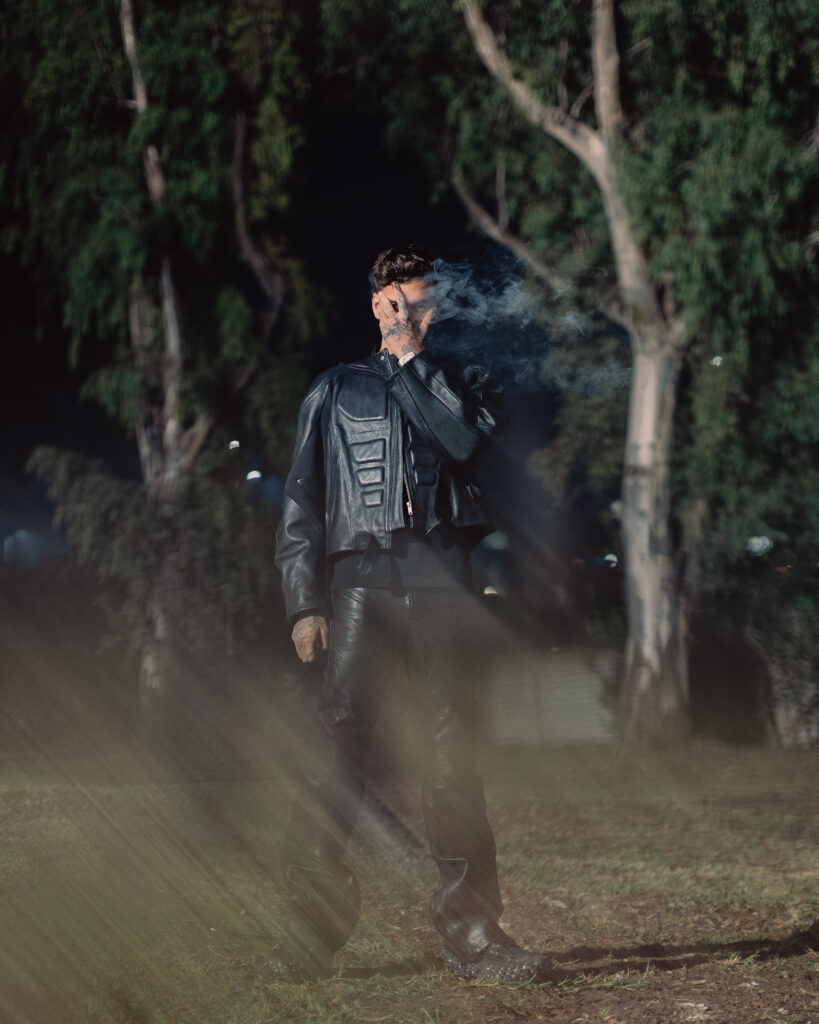
Brittney Scott: Let’s start with the Sphere. What did it take to go from your usual scale to something this massive?
Anyma: When we started talking to the Sphere, I immediately knew it was going to be way more complex than anything I’d ever done. I went from working with a team of 10 or 15 to over a hundred people–plus three studios and cloud rendering companies. It was like making a movie I’d have to perform live. Every part of it had to scale: not just the production, but the creative thinking itself.
I had to start from a new concept, which was the most challenging part. That meant expanding the creative horizon and bringing in other people like Alexander Wessley, who co-directed the stage design with me. We built the “quantum computer.” We developed this system of scenic lighting-cables that connected to the MIDI controller in real-time over Ableton and allowed the show to feel alive, reactive
It was a really big project that took year and a half to prepare. As we built the team and developed the lore, I began to think of it like theater in a digital, VR landscape. That’s where the idea of a “cybernetic opera” came from. It wasn’t just visuals and music anymore–it included singers, a robotic cello duet , and a detailed scenography with an emotional arc.
BS: And while managing all of that, how do you stay connected to being an artist?
Anyma: I want to be in control of every part of the experience–music, visuals, lighting, even know where the emergency exits are. That’s why I started producing my own events instead of relying on festival promoters. I care about things others might overlook: the type of screen panels, the exact quality of the lighting. Perfectionism, for better or worse, is part of how I operate.
But the Sphere tested that. It was more complex than anything I’d done. Nothing works how you expect it to. And yet, because no one had done it before, there was no template so we just had to try, fail, learn fast, and make it happen.
BS: Did you have any emotional goals with the performance? What did you want the audience to feel?
Anyma: I wanted to deliver more than a party. I wanted reflection, stimulation-something that lingers after you leave. I come from the Berlin rave scene, but even back then, I wanted depth. I think people leave my shows with more emotions than they expect: sometimes confused, sometimes moved.
At the Sphere, it was unpredictable. Seventy percent of people were seated. Would they dance? Would they just admire and take it in? I didn’t know. But I wanted to give them a seamless narrative. In The Sphere this shines the most–you get lost in a reality that you feel is real, even if it’s unreal.
BS: What was your favorite moment on stage at the Sphere?
Anyma: The first show, hands down. The emotional rollercoaster was insane. I didn’t fully grasp what was happening until it was over–and I think the same was true for the audience. It felt like we were all witnessing something unprecedented together. New Year’s Eve also. We had custom visuals, fireworks, forced perspective. The energy was next level. I’d never heard people scream that loud. You couldn’t even hear the sound system.
BS: While all this was happening, you were also finishing the The End Of Genesys album. How did that work?
Anyma: The albums are essentially audiovisual diaries. Genesys and Genesys II were released as we made songs and visuals monthly. It was raw output. The End Of Genesys was different. It was scored like a film. Every track was written specifically for a scene. For example “Human Now” the song was written by myself with Magnus, all while we were simultaneously developing the closing sequence visuals with Alessio De Vecchi.
BS: What emotions or concepts were driving the album?
Anyma: I wrote over 100 songs and had to narrow it down. When you boil, boil, boil, what’s left are the crystals. With infinite creative options: digital audio, 3D rendering visual effects, it’s easy to make generic work. Locking down the core concept to tell the story is what matters. With 3D it’s very complicated to transfer real emotions. I feel like the music was my driving force here to make it not feel too much like a video game and drive the intention of the characters.
The music helped the visuals feel emotional, not just like a video game. Think Twin Peaks: each character has a theme. The Syren has her song, the Eva her AI robotic voice–it’s a combination of things that bring it to life.
BS: Let’s talk inspiration. Where does all this come from?
Anyma: I’m very inspired by sci-fi novels and film and soundtracks like Vangelis or Jóhann Jóhannsson. But especially the relationships between different entities: human and robot, machine and nature. That’s where it all started.
Genesys was about a new beginning. It explored coexistence: a symbiotic future between humans and sentient machines. I wanted to imagine a world that wasn’t dystopian—something more balanced, more hopeful. I think it’s realistic fiction. A lot of sci-fi books predicted the future because it’s not so hard to predict the general direction. With AI and quantum computing–both key themes in this show, you’re also tapping into something transcendent and multidimensional. The philosophy behind it isn’t something I’m trying to solve–we can leave that to other people. But it excites me, and ultimately it’s what drives me.
That’s why the robot banging on the glass resonated so much three years ago. That was before the AI hype even started. But people in San Francisco and Europe were already experimenting and worrying about it in its primordial stages. When you’re in the tech world, the instinct to create from it just kicks in. I don’t think there are many artists deeply embedded in that space, so I had a lot of room to work without copying anyone because no one else was really doing it yet.
BS: Let’s take a moment for fashion. What’s your philosophy when it comes to stage looks?
Anyma: Fashion has always been important to me. I grew up with it and I’ve always wanted to create my own style. I like the idea of creating armor. The core approach is a silhouette. I like to keep it a bit more mysterious and create an armour that quite literally protects me.
We created six looks- one with Marlon Ferry, with Nikita and one I did with Ann Demeulemeester, my friend, Stefano Gallici and Antonioli. They helped me to create this silhouette because I couldn’t find it elsewhere.
BS: Do you have a pre-show outfit?
Anyma: I wear something adjacent to the stage look–same vibe, less extreme. Maybe a vest from Marlon without the armor. More wearable, but still in the universe. I style most of it myself–Balenciaga, Rick Owens, newer designers. Always black. Structured. A little provocative.
BS: Who is your fashion muse right now?
Anyma: Grimes.

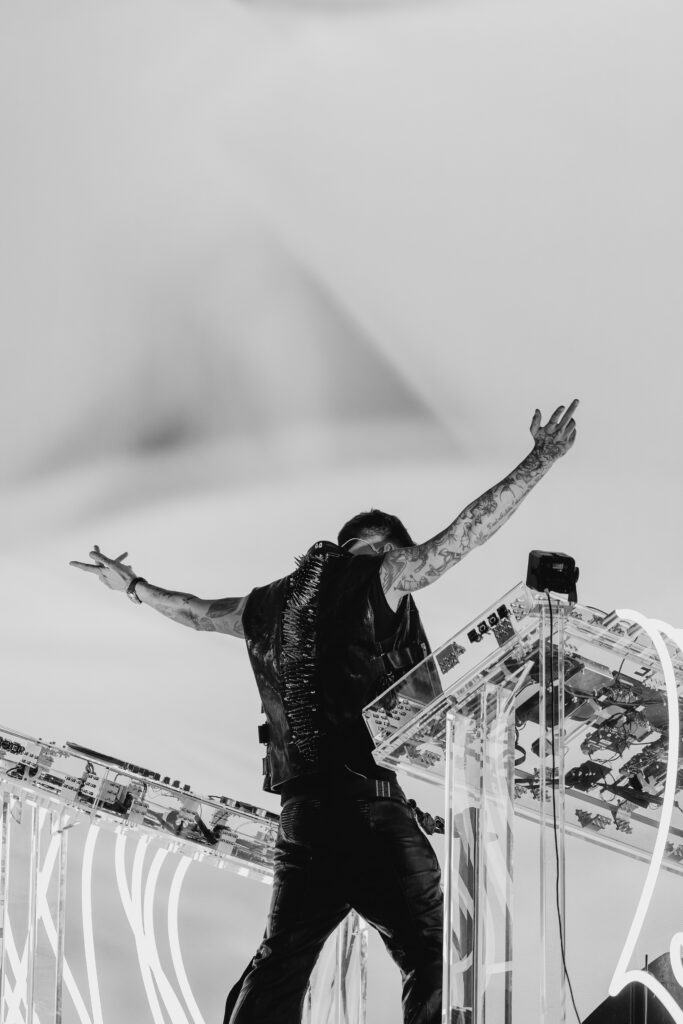
off the cuff
Fav way to celebrate or relax post show/tour?
Sauna and cold plunge
Dream collab (non-musical)?
Hideo Kojima
Soundtrack to your life right now (This can be a song stuck in your head or album that inspires you)
Caroline Polachek – Sunset
Favorite city to shop in while on tour?
Milan
Favorite piece in your closet right now?
Ann Demeulemeester Rose print leather vest
A fashion trend you think needs to retire
Loro Piana Moccasins
Three words to describe your style
Timeless. Elegant. Futuristic.
Designers who inspire you?
Rick Owens | Raf Simons | Yohji Yamamoto | Stefano Galici | Guram Gvasalia | Demna
City you’re most looking forward to playing this year?
Ibiza
What we should look forward to next?
Anyma: Moving forward from The End Of Genesys felt like the end of an era. From the head of the robot we designed four years ago to that robot becoming human on the Sphere stage–it was a wild journey. I do feel there’s more lore to be extrapolated from The End Of Genesys though, meaning it did end, but the end was also the beginning of something for me creatively.
Right now I’m leaning into quantum computation and quantum physics–thinking about alternate realities, both sonically and conceptually. That’s what I want to bring to life this summer. The sound will evolve without losing its core, and the shows will expand with more scenography and the technical depth I learned through the Sphere experience. I’ve evolved and so has the purpose.
Listen to ‘The End Of Genesys ‘ here
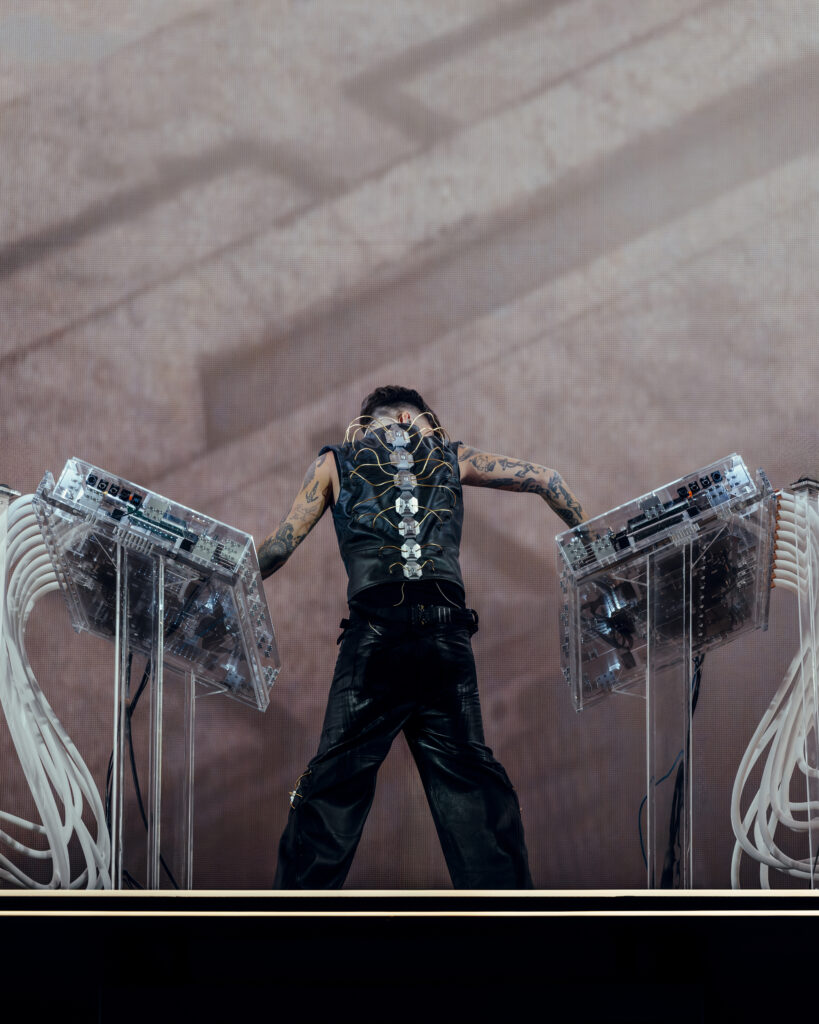
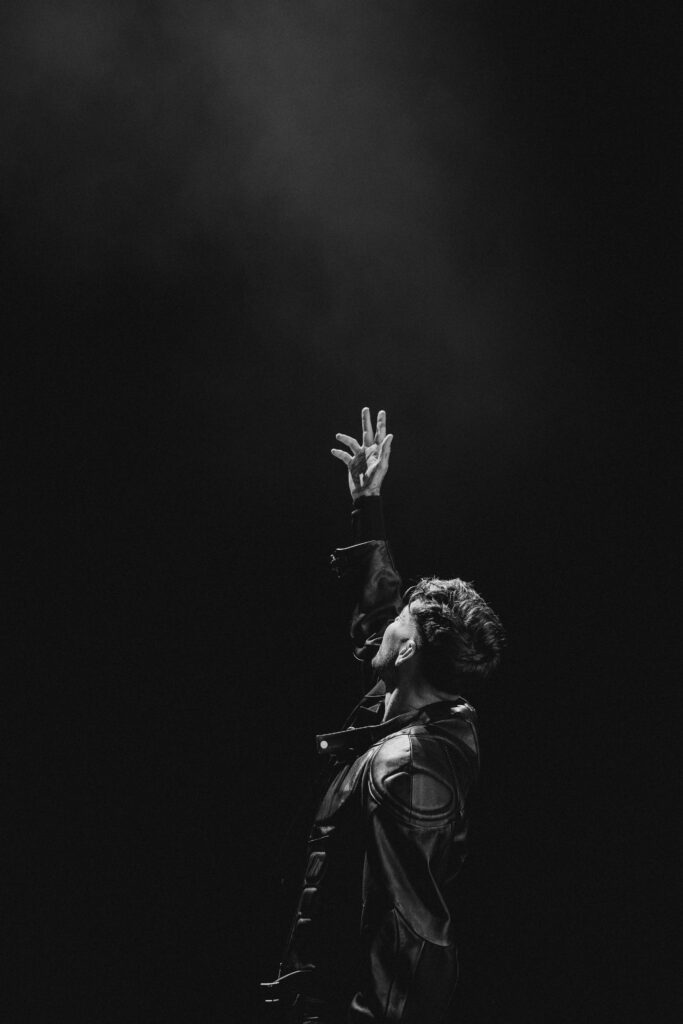
Photography by Rafael Deprost, Alexander Wessley, and Nicko Guihal.
Discover More
